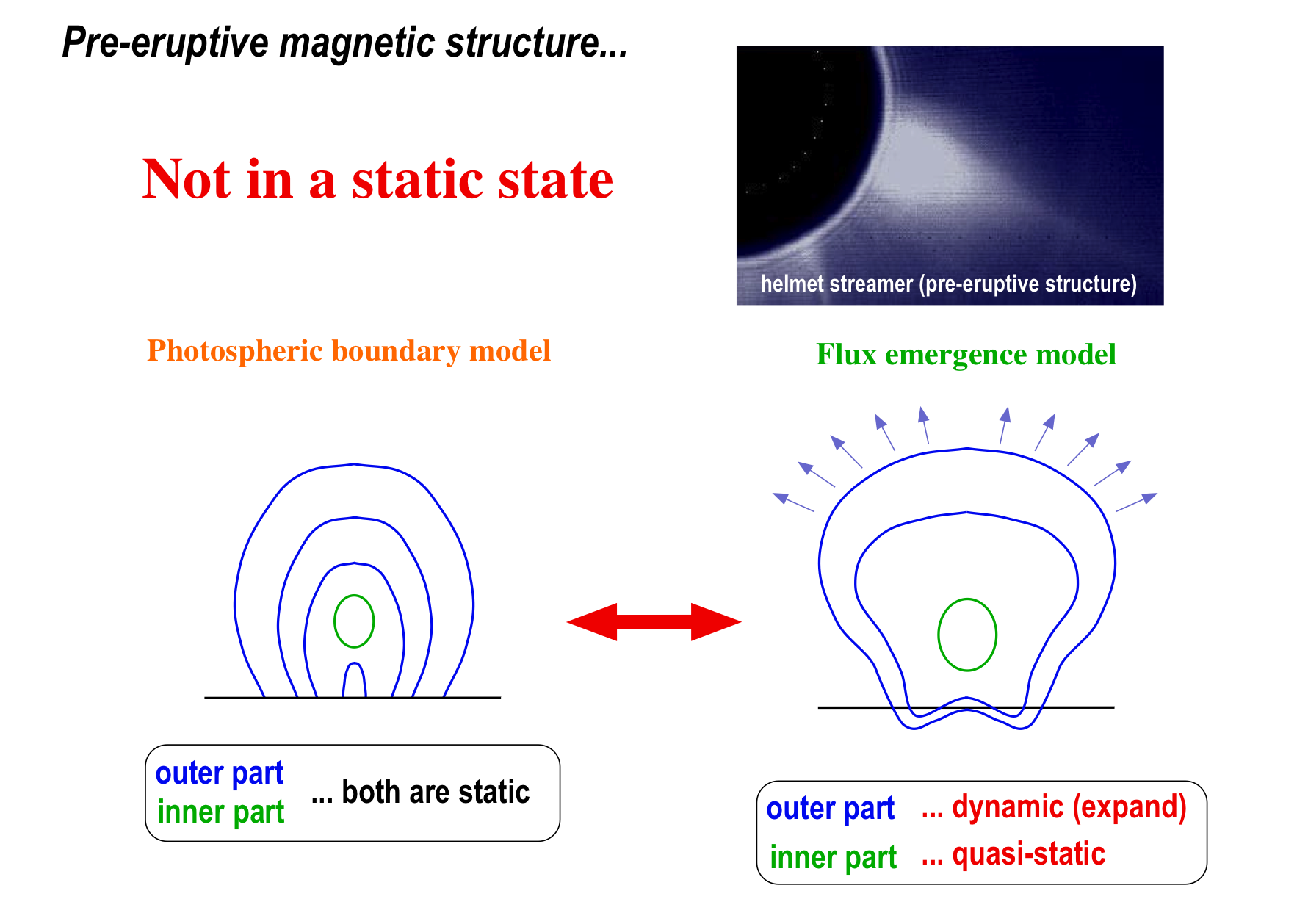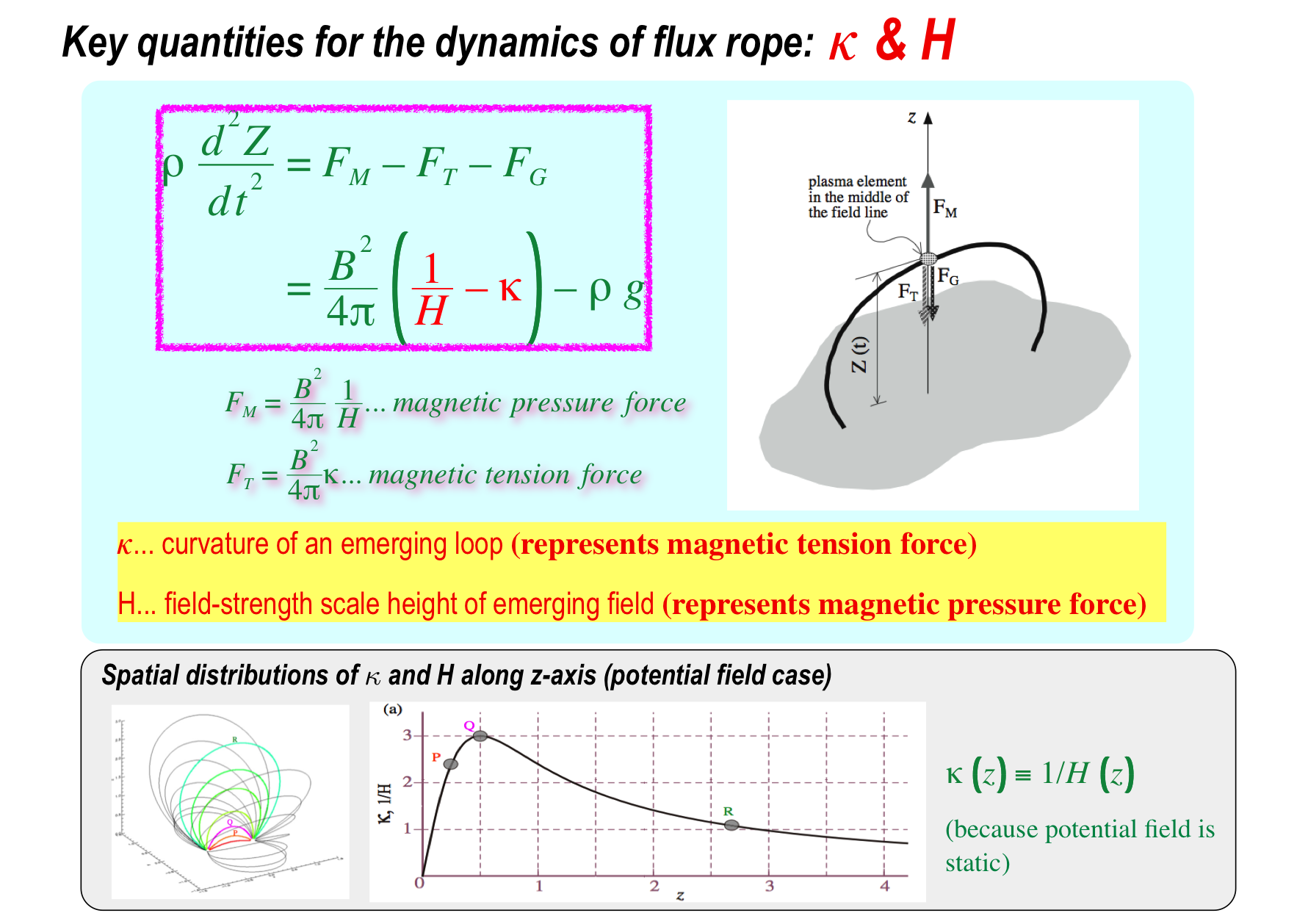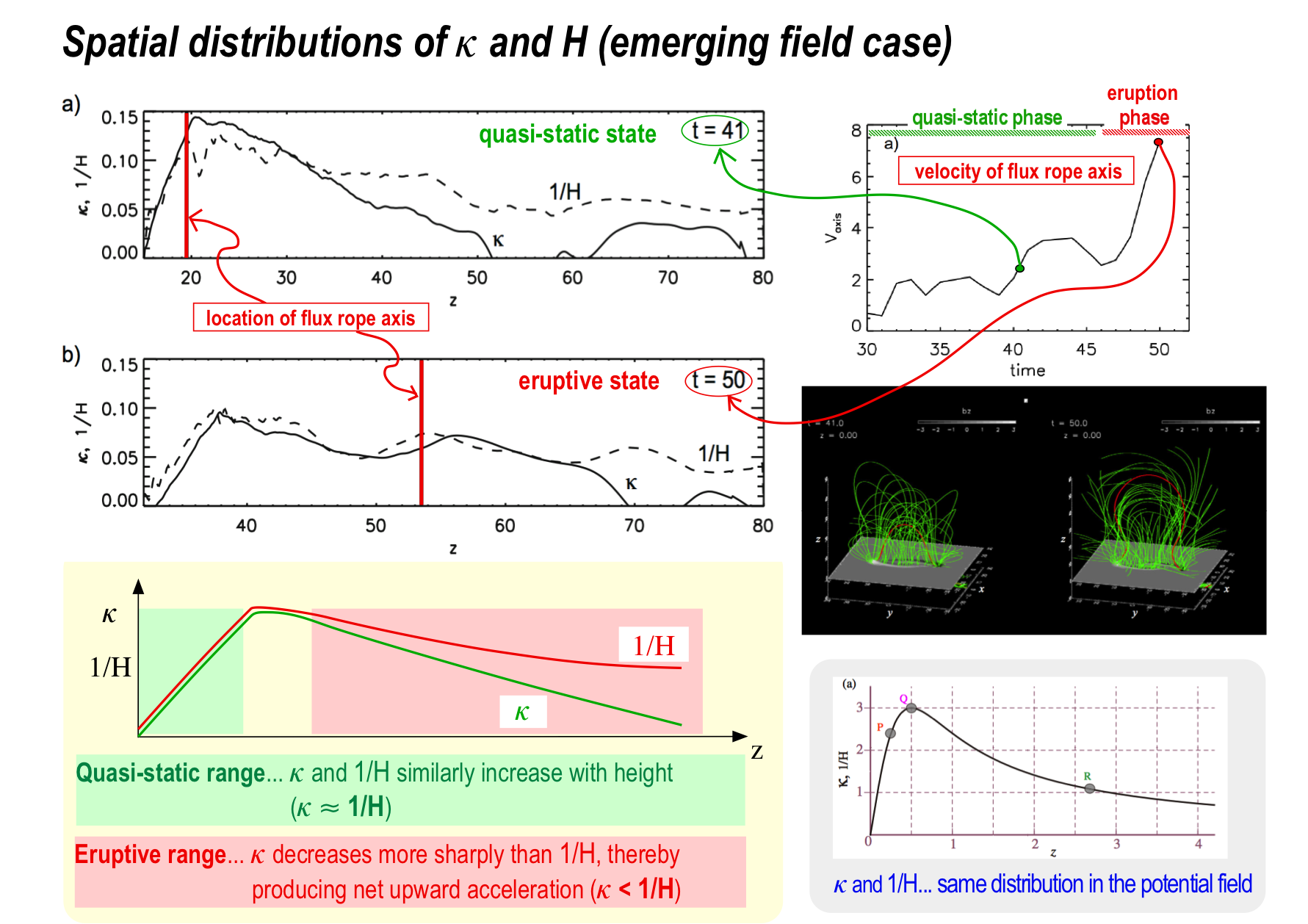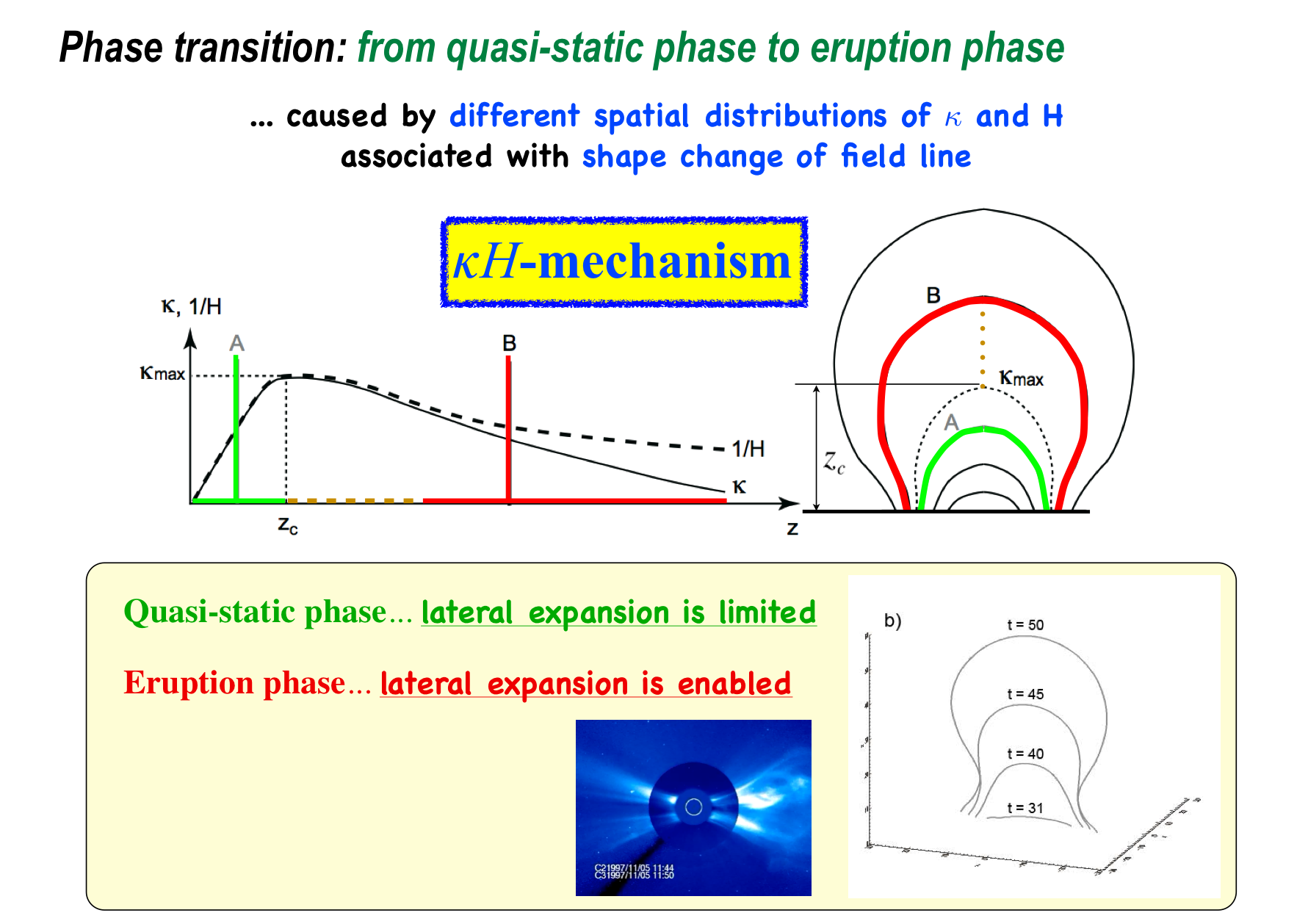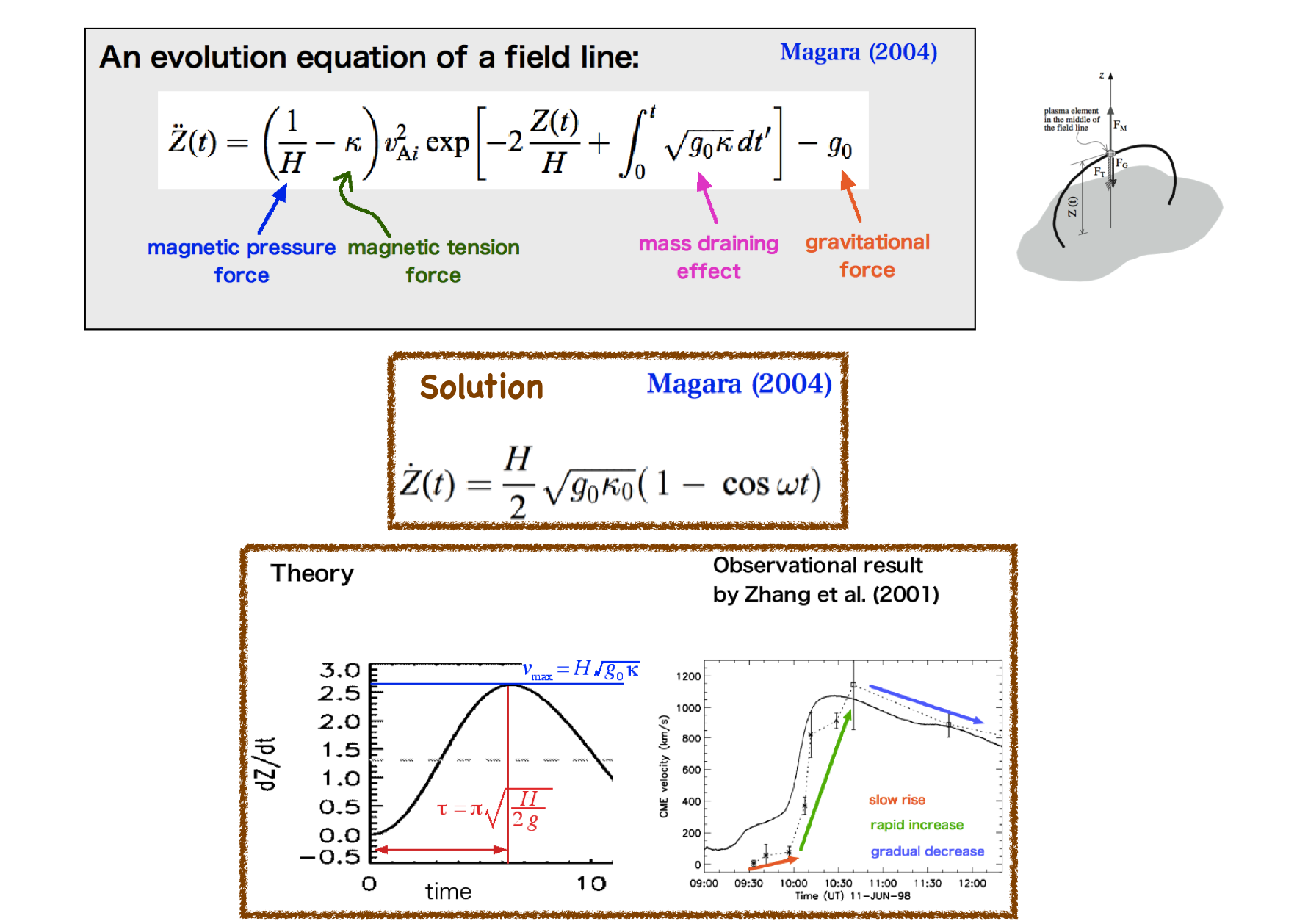κH-mechanism for producing solar eruption
We presented a magnetohydrodynamic model of solar eruption that self-consistently explains how an emerging magnetic field evolves toward the eruption. A twisted flux tube emerging below a solar surface forms pre-eruptive magnetic structure on the Sun, which is composed of a flux rope that eventually erupts and an expanding shearless arcade that overlies the flux rope. In this model the eruption is inherent in the nature of the emerging
twisted flux tube, which is represented by two key quantities: field-line curvature (κ) and field-strength scale height (H) of the emerging magnetic field (Magara 2013).
We also studied stability and dynamics of a flux rope produced by one such emerging twisted flux tube. A three-dimensional magnetohydrodynamic simulation was performed to investigate
several key factors relevant to the stability and dynamics. The stability was examined by calculating
the decay index of an envelope field according to Kliem & Török (2006). Regarding the dynamics, we demonstrated a transition from
a quasi-static state to eruptive state of the flux rope by deriving spatial distributions of field-line curvature and field-strength scale height, which led us to κH-mechanism for producing solar eruption.
Reference
Kliem, B. & Török, T. 2006, PhRvL, 96, 255002
Magara, T. 2013, PASJ, 65, L5
An, J. M. & Magara, T. 2013, ApJ, 773, 21
Zhang, J. et al. 2001, ApJ, 559, 452
